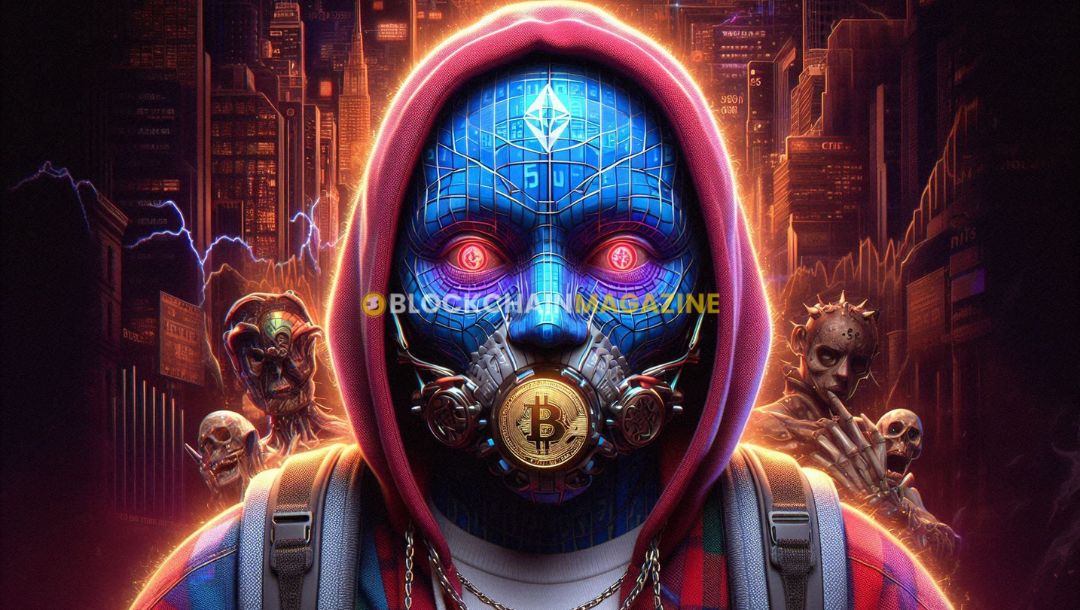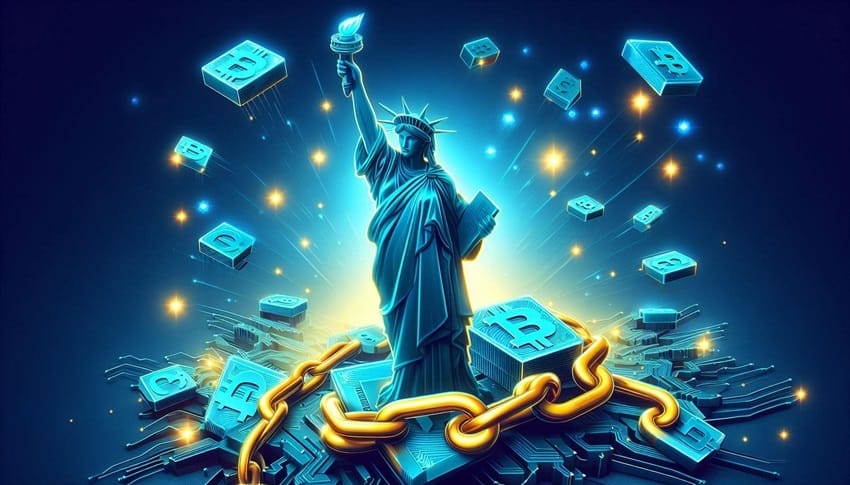NFTs: The Crypto Market Rebel Child – Why Sales Are Soaring Despite the Downturn
In the ever-evolving world of cryptocurrency, non-fungible tokens (NFTs) have emerged as a surprising beacon of resilience. Despite the broader market downturn affecting traditional cryptocurrencies like Bitcoin and Ethereum, NFT sales continue to soar. This article explores the factors behind this phenomenon, comparing NFTs to traditional cryptocurrencies, and examining the role of community, environmental concerns, and future prospects.
Key Takeaways
- NFTs have shown remarkable resilience in the volatile crypto market, maintaining strong sales despite downturns affecting other digital assets.
- The cultural and artistic value of NFTs, along with celebrity endorsements, have significantly driven their popularity and sales.
- Technological innovations and the unique nature of NFTs as digital assets have attracted a diverse range of investors.
- Environmental concerns surrounding NFTs are being addressed through sustainability initiatives, although public perception remains mixed.
- Online communities and social media play a crucial role in the success and continued growth of the NFT market.
The Resilience of NFTs in a Volatile Crypto Market
Understanding Market Dynamics
The world of cryptocurrency is nothing short of a rollercoaster ride, with recent turbulence highlighting the market’s inherent volatility. Despite this, NFT sales in 2024 have shown remarkable resilience. This resilience can be attributed to the unique nature of NFTs, which are not just digital assets but also hold cultural and artistic value.
NFTs as Digital Assets
NFTs, or Non-Fungible Tokens, represent ownership of unique items on the blockchain. Unlike traditional cryptocurrencies, which are fungible and can be exchanged on a one-to-one basis, NFTs are unique and cannot be replicated. This uniqueness adds a layer of value that is not affected by the same market forces that impact other cryptocurrencies.
Investor Sentiment and NFTs
Investor sentiment plays a crucial role in the crypto market. While traditional cryptocurrencies have seen significant declines, NFTs have managed to maintain their appeal. This is partly due to the growing interest in utility-focused projects and AI-generated art, which offer new and exciting opportunities for investors. The market’s maturity and the emphasis on these innovative projects have helped stabilize NFT sales, even amidst broader market volatility.
The impact of crypto volatility on NFTs has been mitigated by their unique value proposition and the growing interest in innovative projects. This has allowed NFTs to thrive even when other digital assets are struggling.
Factors Driving NFT Sales Despite Market Downturn
Cultural and Artistic Value
Despite the broader altcoin struggles amidst bitcoin and ether’s resilience, NFTs have carved out a unique niche by offering cultural and artistic value. Collectors are increasingly viewing NFTs as digital art pieces, which has led to a surge in interest and sales. This trend is particularly evident among high-net-worth individuals (HNWIs), who continue to invest in digital art despite economic uncertainties.
Celebrity Endorsements
Celebrity endorsements have played a significant role in boosting NFT sales. High-profile figures from various industries, including music, sports, and entertainment, have launched their own NFT collections, attracting their fan bases to the market. This influx of celebrity-backed NFTs has created a buzz, driving up demand and sales.
Technological Innovations
Technological advancements have also contributed to the rising popularity of NFTs. Innovations in blockchain technology have made it easier to create, buy, and sell NFTs, enhancing their appeal. Additionally, the development of more user-friendly platforms has lowered the barrier to entry, allowing a broader audience to participate in the NFT market.
The NFT market’s resilience and growth, even in the face of broader crypto market challenges, highlight its unique position and potential for future expansion.
Comparing NFTs to Traditional Cryptocurrencies
Volatility and Stability
NFTs and traditional cryptocurrencies like Bitcoin and Ethereum exhibit different levels of volatility and stability. While cryptocurrencies are known for their price swings, NFTs offer a unique form of digital ownership that can sometimes provide more stability. This is because each NFT is unique and cannot be exchanged on a one-to-one basis with another NFT, unlike fungible tokens such as Bitcoin.
Market Perception
The market perception of NFTs and traditional cryptocurrencies also varies significantly. Cryptocurrencies are often seen as digital currencies or stores of value, whereas NFTs are viewed as digital assets with intrinsic value tied to their uniqueness and rarity. This distinction has led to a growing interest in NFTs as they evolve towards utility-driven assets with real-world applications.
Investment Strategies
Investment strategies for NFTs and traditional cryptocurrencies differ as well. While cryptocurrency investors may focus on market trends and price movements, NFT investors often look at the cultural and artistic value of the assets they are purchasing. Additionally, the NFT market is evolving towards utility-driven assets with real-world applications, focusing on growth, DeFi integration, and Bitcoin-based NFTs.
The unique nature of NFTs makes them an intriguing investment option, especially as the market continues to mature and integrate with other financial technologies.
Environmental Concerns and the NFT Market
Energy Consumption
NFTs have garnered significant attention not only for their unique digital value but also for their astronomical energy footprint. The process of minting and trading NFTs is energy-intensive, raising concerns about their environmental impact. This energy consumption is primarily due to the blockchain technology that underpins NFTs, which requires substantial computational power.
Sustainability Initiatives
In response to these concerns, several initiatives have emerged to make NFTs more sustainable. These include the development of more energy-efficient blockchain technologies and the use of carbon offsets to mitigate the environmental impact. Some platforms are also exploring the use of proof-of-stake mechanisms, which are less energy-intensive compared to traditional proof-of-work systems.
Public Perception
Public perception of NFTs is increasingly influenced by their environmental impact. While some view NFTs as a revolutionary digital asset, others are wary of their ecological footprint. This dichotomy in perception is shaping the future of NFTs, pushing the industry towards more sustainable practices.
The environmental impact of NFTs is a critical issue that cannot be ignored. As the market continues to grow, addressing these concerns will be essential for the long-term viability of NFTs.
The Role of Community in NFT Success
Online Communities
Online communities have become the backbone of the NFT ecosystem. These digital spaces allow artists, collectors, and enthusiasts to connect, share ideas, and support each other. The future of social NFTs in 2024 will likely see even more emphasis on community building and social engagement, reshaping the NFT landscape.
Influence of Social Media
Social media platforms play a crucial role in the promotion and sale of NFTs. Artists and creators use these platforms to reach a broader audience, engage with fans, and build a loyal following. The viral nature of social media can turn an unknown artist into a sensation overnight, driving NFT sales and increasing visibility.
Collaborative Projects
Collaborative projects are another significant aspect of the NFT community. Artists often team up to create unique pieces, combining their talents to produce something extraordinary. These collaborations not only result in innovative art but also strengthen the bonds within the community, fostering a sense of unity and shared purpose.
The strength of the NFT market lies in its community. As long as artists, collectors, and enthusiasts continue to support each other, the NFT ecosystem will thrive, regardless of market fluctuations.
Future Prospects for NFTs in the Crypto Market
Market Predictions
The future of NFTs looks promising, with predicted resurgence driven by utility and innovation. As we move into 2024, NFTs are expected to find diverse applications in art, gaming, and more. Blockchain authentication will continue to ensure unique digital ownership, making NFTs a valuable asset class.
Potential Challenges
Despite the optimism, there are several challenges that the NFT market must overcome. These include regulatory scrutiny, environmental concerns, and the need for broader adoption. Addressing these issues will be crucial for sustained growth.
Opportunities for Growth
The NFT market offers numerous opportunities for growth. Innovations in technology, such as improved blockchain scalability and new use cases, will drive the market forward. Additionally, the integration of NFTs into mainstream platforms and applications will expand their reach and utility.
The resilience of NFTs in a volatile market highlights their potential to become a significant part of the digital economy.
The future prospects for NFTs in the crypto market are incredibly promising, with potential for significant growth and innovation. As the market evolves, staying informed is crucial. For the latest insights and trends, visit our website and stay ahead of the curve.
Conclusion
Despite the broader cryptocurrency market experiencing significant turbulence and downturns, the NFT sector continues to defy expectations with soaring sales. This resilience can be attributed to the unique value proposition that NFTs offer, including digital ownership, rarity, and the potential for significant returns on investment. While traditional cryptocurrencies like Dogecoin and Super Trump have seen substantial declines, NFTs have carved out a niche that appeals to both investors and collectors alike. As the market evolves, it will be fascinating to see how NFTs continue to shape the landscape of digital assets and whether they can maintain their momentum amidst ongoing market challenges.
Frequently Asked Questions
What are NFTs?
NFTs, or Non-Fungible Tokens, are unique digital assets that represent ownership or proof of authenticity of a specific item, often digital art, music, or other virtual goods.
Why are NFT sales soaring despite the crypto market downturn?
NFT sales are soaring due to their cultural and artistic value, celebrity endorsements, and technological innovations that make them appealing to a broader audience beyond traditional cryptocurrency investors.
How do NFTs differ from traditional cryptocurrencies?
Unlike traditional cryptocurrencies like Bitcoin or Ether, which are fungible and can be exchanged on a one-to-one basis, NFTs are unique and cannot be exchanged on a like-for-like basis. Each NFT has its own distinct value and properties.
What are the environmental concerns associated with NFTs?
NFTs have been criticized for their high energy consumption, as the blockchain networks they rely on, like Ethereum, require significant computational power. However, there are ongoing sustainability initiatives aimed at reducing the environmental impact of NFTs.
How do online communities influence the success of NFTs?
Online communities play a crucial role in the success of NFTs by fostering engagement, creating hype, and supporting artists and creators. Platforms like Twitter, Discord, and Reddit are pivotal in building and maintaining these communities.
What are the future prospects for NFTs in the crypto market?
The future prospects for NFTs include continued growth driven by technological advancements, broader adoption, and new use cases. However, potential challenges such as regulatory scrutiny and market volatility could impact their trajectory.
Stay informed with daily updates from Blockchain Magazine on Google News. Click here to follow us and mark as favorite: [Blockchain Magazine on Google News].
Get Blockchain Insights In Inbox
Stay ahead of the curve with expert analysis and market updates.
latest from tech
Disclaimer: Any post shared by a third-party agency are sponsored and Blockchain Magazine has no views on any such posts. The views and opinions expressed in this post are those of the clients and do not necessarily reflect the official policy or position of Blockchain Magazine. The information provided in this post is for informational purposes only and should not be considered as financial, investment, or professional advice. Blockchain Magazine does not endorse or promote any specific products, services, or companies mentioned in this posts. Readers are encouraged to conduct their own research and consult with a qualified professional before making any financial decisions.

 Bitcoin
Bitcoin  Ethereum
Ethereum  Tether
Tether  XRP
XRP  Solana
Solana  Dogecoin
Dogecoin  USDC
USDC  Lido Staked Ether
Lido Staked Ether  Cardano
Cardano  TRON
TRON  Avalanche
Avalanche  Toncoin
Toncoin  Wrapped stETH
Wrapped stETH  Chainlink
Chainlink  Shiba Inu
Shiba Inu  Wrapped Bitcoin
Wrapped Bitcoin  Sui
Sui  Stellar
Stellar  Polkadot
Polkadot  Hedera
Hedera  WETH
WETH  Hyperliquid
Hyperliquid  Bitcoin Cash
Bitcoin Cash  LEO Token
LEO Token  Uniswap
Uniswap  Litecoin
Litecoin  Pepe
Pepe  Wrapped eETH
Wrapped eETH  NEAR Protocol
NEAR Protocol  Ethena USDe
Ethena USDe  USDS
USDS  Internet Computer
Internet Computer  Aptos
Aptos  Aave
Aave  POL (ex-MATIC)
POL (ex-MATIC)  Mantle
Mantle  Cronos
Cronos  Ethereum Classic
Ethereum Classic  Render
Render  Monero
Monero  WhiteBIT Coin
WhiteBIT Coin  MANTRA
MANTRA  Virtuals Protocol
Virtuals Protocol  Bittensor
Bittensor  Dai
Dai  Artificial Superintelligence Alliance
Artificial Superintelligence Alliance  Arbitrum
Arbitrum 



